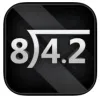Take a look inside 5 images
Long Division Touch - Classroom Edition
Pros: Kids can learn, and become fluent in, long division using this highly interactive tool.
Cons: Graphics are plain, and the app lacks a motivational reward system.
Bottom Line: Straightforward interactive tool helps kids learn division of whole numbers and decimals using a standard algorithm.
Kids can use the app as a practice tool when learning long division. Choose a lesson or create activities for kids to complete based on their abilities. For example, if they're just learning long division, start with the Zero Up Top lesson. Have kids view the Introduction with a partner first and then complete the lesson individually. If kids are sharing devices, they can take turns by completing every other problem. Keep in mind that the app does not accommodate multiple users, however, so data will be stored as from a single user.
Kids solve long division problems by dragging digits into place, sliding the decimal into place, and tapping to identify repeating decimals as needed. Two main options are offered at the main screen: Activities and Lessons. In Activities, users create their own activities, choosing how many and what types of problems kids will complete. Total number correct and timed results are automatically saved by reporting when kids complete the activities. In the Lessons section, an introduction teaches kids how to use the touch interface and complete division problems. Five categories of lessons are provided: Zero Up Top, Remainders, Decimals, Repeating Decimals, and Decimal in Divisor. Before starting a lesson, kids can view an "Explain" problem, which walks them through the solution and includes text explanations of each step.
In this handy tool for kids who need to learn or practice division using the standard algorithm, digits are large and spaced out so kids can easily keep track of place values when carrying or regrouping. Division problems range from basic to moderately complex; more challenging problems feature a rational number as the divisor. The stepped-out procedures and instant feedback support learning, and kids are empowered to work and finish problems at their own pace. More interesting and colorful graphics, as well as a motivational or reward system, might make it more appealing to some kids.













